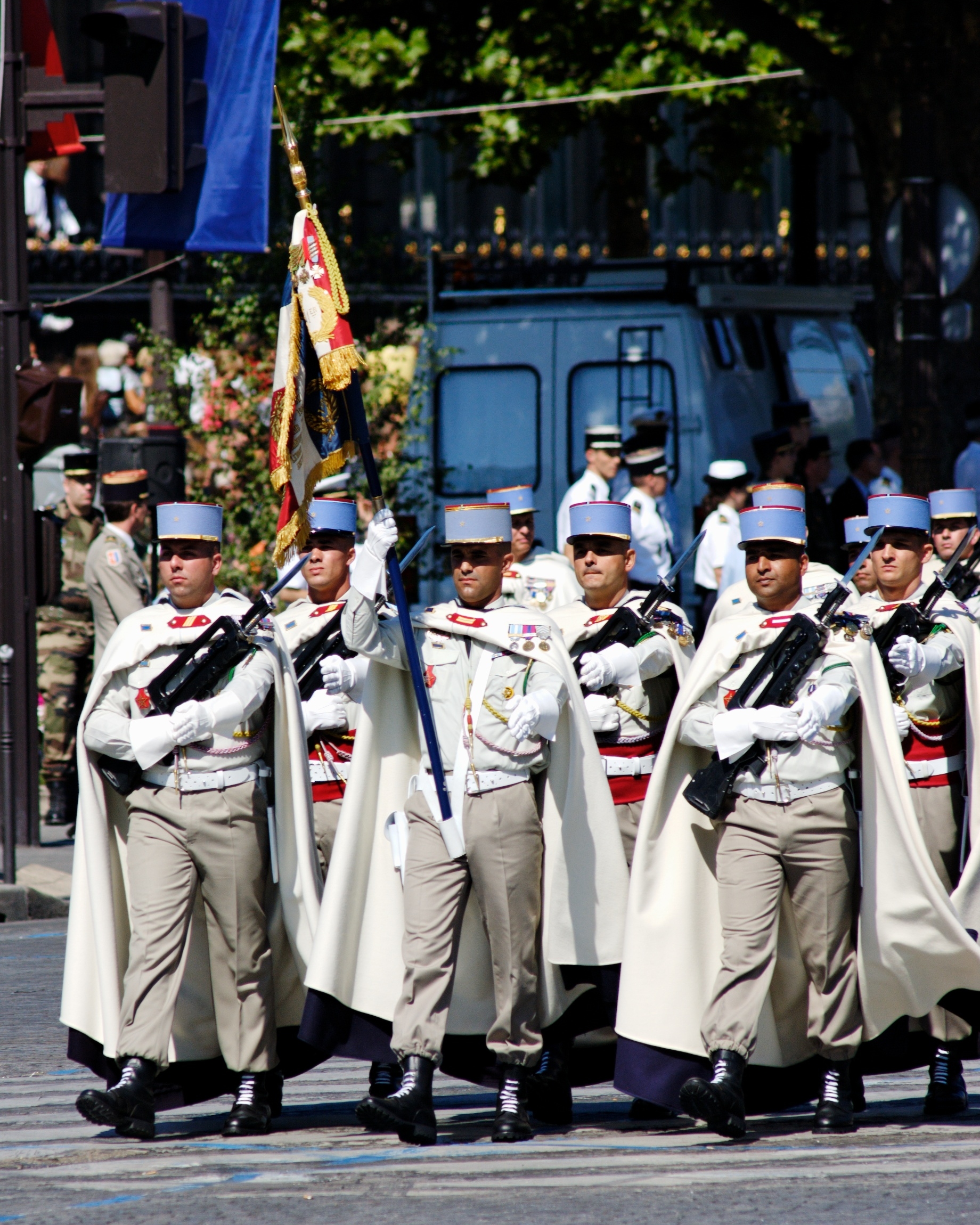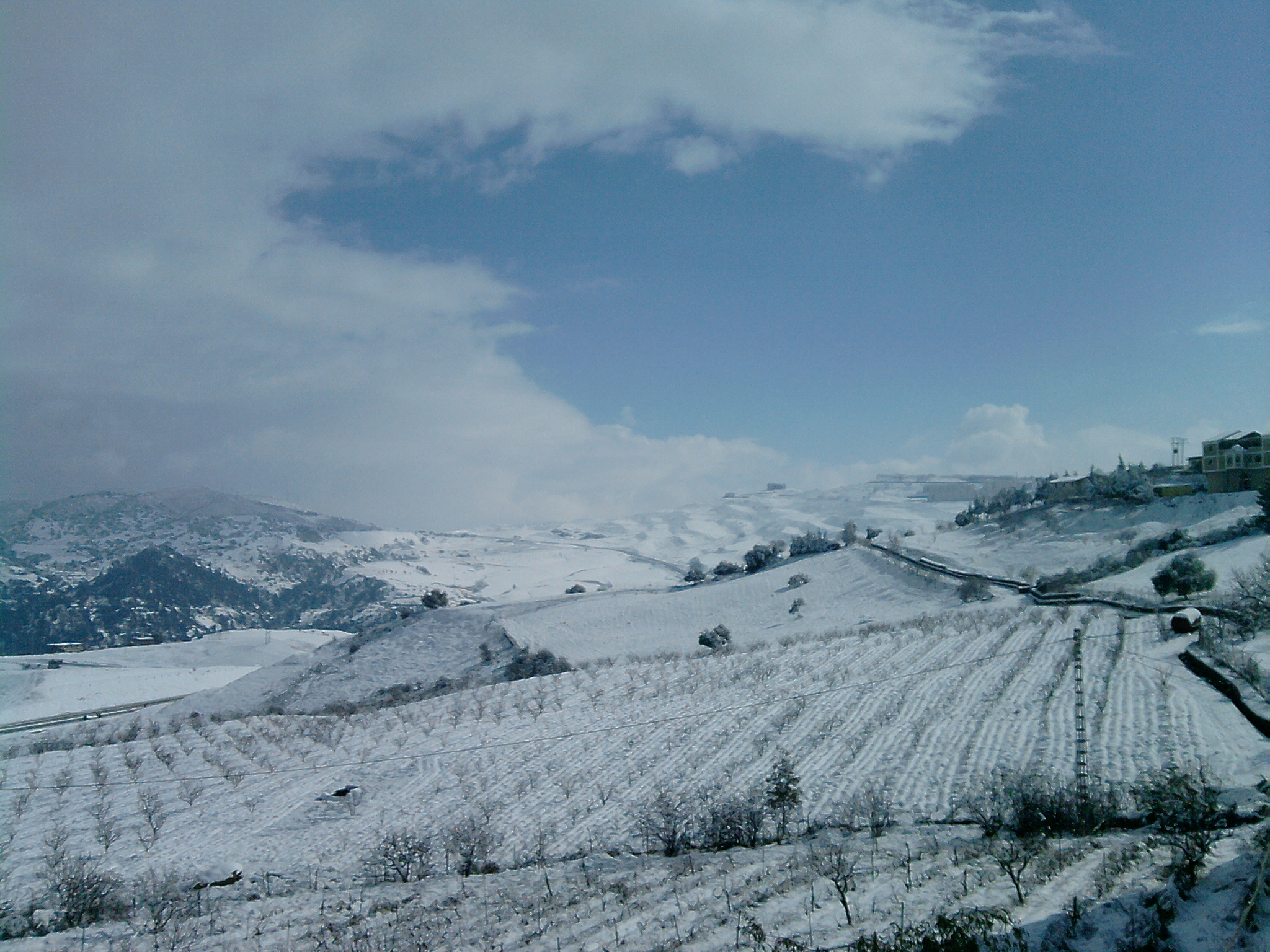|
Rémy Raffalli
Barthélémy "Rémy" Raffalli (16 March 1913 – 10 September 1952) was a French Army major who fought in World War II and the First Indochina War. Early life and pre-war service He entered the Saint-Cyr Military School on 1 October 1933 as part of the King Albert I promotion and graduated in 1935. Raffalli then chose to enter the cavalry of the French Army and studied at the Armoured Cavalry Branch Training School in Saumur. In 1936 he was posted to the 1st Regiment of Spahis in Algeria, which he joined at Médéa, and then the 3rd Moroccan Regiment of Spahis. World War II service Raffalli joined the French Expeditionary Corps in Italy in 1943 and served with distinction. On 17 March 1944, he was seriously wounded while leading a squadron of the 5th Moroccan Spahis Regiment. Post War service and death Raffalli earned his parachute badge in September 1949. After a short tour with the 3rd Foreign Parachute Battalion 3ème BEP and 1st Foreign Parachute Battalion 1et BEP, ... [...More Info...] [...Related Items...] OR: [Wikipedia] [Google] [Baidu] |
Nice
Nice ( , ; Niçard: , classical norm, or , nonstandard, ; it, Nizza ; lij, Nissa; grc, Νίκαια; la, Nicaea) is the prefecture of the Alpes-Maritimes department in France. The Nice agglomeration extends far beyond the administrative city limits, with a population of nearly 1 millionDemographia: World Urban Areas , Demographia.com, April 2016 on an area of . Located on the , the southeastern coast of France on the , at the foot of the |
Armored Cavalry
Armoured cavalry are combat units using armoured fighting vehicles (AFVs) instead of horses. They began to replace horse cavalry in the heavy shock and the light reconnaissance, skirmishing and exploitation/pursuit roles in most armies commencing after the First World War. Armoured cavalry, or simply armoured units, may be primarily equipped with heavy tanks or lighter and faster light tanks, armoured cars, or even scout cars in the case of what is often known as cavalry scout. Motorised or mechanised infantry may make up a portion of the unit in some countries, supported by either motorised or self-propelled artillery, with possibly airmobile troops on helicopters included. Historical background Horse-mounted troops used various forms of armour for their own protection, and often added protective elements to their mount's tack. Horse armour included hardened leather in the ancient world, expanding to barding and even plate armour by the Middle Ages. From antiquity, li ... [...More Info...] [...Related Items...] OR: [Wikipedia] [Google] [Baidu] |
Battle Of Nghia Lo
A battle is an occurrence of combat in warfare between opposing military units of any number or size. A war usually consists of multiple battles. In general, a battle is a military engagement that is well defined in duration, area, and force commitment. An engagement with only limited commitment between the forces and without decisive results is sometimes called a skirmish. The word "battle" can also be used infrequently to refer to an entire operational campaign, although this usage greatly diverges from its conventional or customary meaning. Generally, the word "battle" is used for such campaigns if referring to a protracted combat encounter in which either one or both of the combatants had the same methods, resources, and strategic objectives throughout the encounter. Some prominent examples of this would be the Battle of the Atlantic, Battle of Britain, and Battle of Stalingrad, all in World War II. Wars and military campaigns are guided by military strategy, whereas bat ... [...More Info...] [...Related Items...] OR: [Wikipedia] [Google] [Baidu] |
Major (rank)
Major (commandant in certain jurisdictions) is a military rank of commissioned officer status, with corresponding ranks existing in many military forces throughout the world. When used unhyphenated and in conjunction with no other indicators, major is one rank above captain, and one rank below lieutenant colonel. It is considered the most junior of the field officer ranks. Background Majors are typically assigned as specialised executive or operations officers for battalion-sized units of 300 to 1,200 soldiers while in some nations, like Germany, majors are often in command of a company. When used in hyphenated or combined fashion, the term can also imply seniority at other levels of rank, including ''general-major'' or ''major general'', denoting a low-level general officer, and ''sergeant major'', denoting the most senior non-commissioned officer (NCO) of a military unit. The term ''major'' can also be used with a hyphen to denote the leader of a military band such as ... [...More Info...] [...Related Items...] OR: [Wikipedia] [Google] [Baidu] |
Vietnam
Vietnam or Viet Nam ( vi, Việt Nam, ), officially the Socialist Republic of Vietnam,., group="n" is a country in Southeast Asia, at the eastern edge of mainland Southeast Asia, with an area of and population of 96 million, making it the world's sixteenth-most populous country. Vietnam borders China to the north, and Laos and Cambodia to the west. It shares maritime borders with Thailand through the Gulf of Thailand, and the Philippines, Indonesia, and Malaysia through the South China Sea. Its capital is Hanoi and its largest city is Ho Chi Minh City (commonly known as Saigon). Vietnam was inhabited by the Paleolithic age, with states established in the first millennium BC on the Red River Delta in modern-day northern Vietnam. The Han dynasty annexed Northern and Central Vietnam under Chinese rule from 111 BC, until the first dynasty emerged in 939. Successive monarchical dynasties absorbed Chinese influences through Confucianism and Buddhism, and expanded ... [...More Info...] [...Related Items...] OR: [Wikipedia] [Google] [Baidu] |
Hanoi
Hanoi or Ha Noi ( or ; vi, Hà Nội ) is the capital and second-largest city of Vietnam. It covers an area of . It consists of 12 urban districts, one district-leveled town and 17 rural districts. Located within the Red River Delta, Hanoi is the cultural and political centre of Vietnam. Hanoi can trace its history back to the third century BCE, when a portion of the modern-day city served as the capital of the historic Vietnamese nation of Âu Lạc. Following the collapse of Âu Lạc, the city was part of Han China. In 1010, Vietnamese emperor Lý Thái Tổ established the capital of the imperial Vietnamese nation Đại Việt in modern-day central Hanoi, naming the city Thăng Long (literally 'Ascending Dragon'). Thăng Long remained Đại Việt's political centre until 1802, when the Nguyễn dynasty, the last imperial Vietnamese dynasty, moved the capital to Huế. The city was renamed Hanoi in 1831, and served as the capital of French Indochina from 1902 to 1945. O ... [...More Info...] [...Related Items...] OR: [Wikipedia] [Google] [Baidu] |
Spahi
Spahis () were light-cavalry regiments of the French army recruited primarily from the indigenous populations of Algeria, Tunisia and Morocco. The modern French Army retains one regiment of Spahis as an armoured unit, with personnel now recruited in mainland France. Senegal also maintains a mounted unit with spahi origins as a presidential escort: the Red Guard. Etymology The name is the French form of the Ottoman Turkish word , a word derived from New Persian , meaning "army", or "horsemen"; or from , meaning "warriors". Early history Following the French occupation of Algiers in 1830, detachments of locally recruited irregular horsemen were attached to the regiments of light cavalry assigned to North African service. These auxiliaries were designated as ''chasseurs spahis''. Between 1834 and 1836 they were organised into four squadrons of regular spahis. In 1841 the 14 squadrons by then in existence were brought together in a single corps of spahis. Finally, in 1845 t ... [...More Info...] [...Related Items...] OR: [Wikipedia] [Google] [Baidu] |
Wounded In Action
Wounded in Action (WIA) describes combatants who have been wounded while fighting in a combat zone during wartime, but have not been killed. Typically, it implies that they are temporarily or permanently incapable of bearing arms or continuing to fight. Generally, the Wounded in Action are far more numerous than those killed. Common combat injuries include second and third degree burns, broken bones, shrapnel wounds, brain injuries, spinal cord injuries, nerve damage, paralysis, loss of sight and hearing, post-traumatic stress disorder (PTSD), and limb loss. For the U.S. military, becoming WIA in combat generally results in subsequent conferral of the Purple Heart, because the purpose of the medal itself (one of the highest awards, military or civilian, officially given by the American government) is to recognize those killed, incapacitated, or wounded in battle. NATO's definitions Wounded in action A battle casualty other than '' killed in action'' who has incurred an injur ... [...More Info...] [...Related Items...] OR: [Wikipedia] [Google] [Baidu] |
Kingdom Of Italy (1861–1946)
The Kingdom of Italy ( it, Regno d'Italia) was a state that existed from 1861, when Victor Emmanuel II of Kingdom of Sardinia, Sardinia was proclamation of the Kingdom of Italy, proclaimed King of Italy, until 1946, when civil discontent led to an 1946 Italian institutional referendum, institutional referendum to abandon the monarchy and form the modern Italy, Italian Republic. The state resulted from a decades-long process, the ''Italian unification, Risorgimento'', of consolidating the different states of the Italian Peninsula into a single state. That process was influenced by the House of Savoy, Savoy-led Kingdom of Sardinia, which can be considered Italy's legal Succession of states, predecessor state. Italy Third Italian War of Independence, declared war on Austrian Empire, Austria in alliance with Kingdom of Prussia, Prussia in 1866 and received the region of Veneto following their victory. Italian troops Capture of Rome, entered Rome in 1870, ending Papal States, more tha ... [...More Info...] [...Related Items...] OR: [Wikipedia] [Google] [Baidu] |
French Expeditionary Corps (1943-1944)
There have been several French Expeditionary Corps (French ''Corps expéditionnaire'' 'français'': * Expeditionary Corps of the Orient 'Corps expéditionnaire d'Orient'', CEO(1915), during World War I * Expeditionary Corps of the Dardanelles 'Corps expéditionnaire des Dardanelles'', CED(1915–16), during World War I *French Expeditionary Corps in Scandinavia 'Corps expéditionnaire français en Scandinavie'', CEFS(1940), during World War II *French Expeditionary Corps in Italy 'Corps expéditionnaire français en Italie'', CEFI(1943–44), during World War II *French Expeditionary Corps in the Far East The French Far East Expeditionary Corps (french: Corps Expéditionnaire Français en Extrême-Orient, CEFEO) was a colonial Expeditionary warfare, expeditionary force of the French Army, French Union Army that was initially formed in French Indoc ... 'Corps expéditionnaire français en Extrême-Orient'', CEFEO(1945–1956), during the First Indochina War {{set index ... [...More Info...] [...Related Items...] OR: [Wikipedia] [Google] [Baidu] |
Médéa
Médéa ( ber, Lemdiyyet, ar, المدية ''al-Madiya''), population 123,535 (1998 census) is the capital city of Médéa Province, Algeria. It is located roughly 68 km south of Algiers. The present-day city is situated on the site of an ancient Roman military post and has a history dating back to the 10th century. The town is French in character, with a rectangular city plan, red tile-roofed buildings, and beautiful public gardens. The hills surrounding Médéa are covered with vineyards, orchards, and farms that yield abundant grain. Médéa's chief products are wines, irrigation equipment, and various handicrafts. Etymology Medea is a Roman city named ad ''Medix'' or ''Media'' ("halfway" in Latin), so called because it was equidistant from Tirinadi (Berrouaghia) and Sufnsar ( Amourah) rest house of Mauretania caesarean on the road linking the capital Caesarea (Cherchell) to the colony Auzia (Aumale). History During the Roman Empire there was a settlement called ... [...More Info...] [...Related Items...] OR: [Wikipedia] [Google] [Baidu] |





